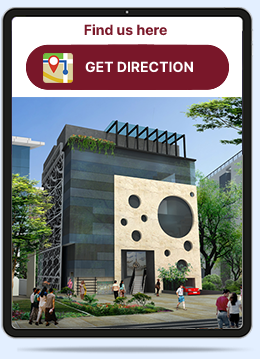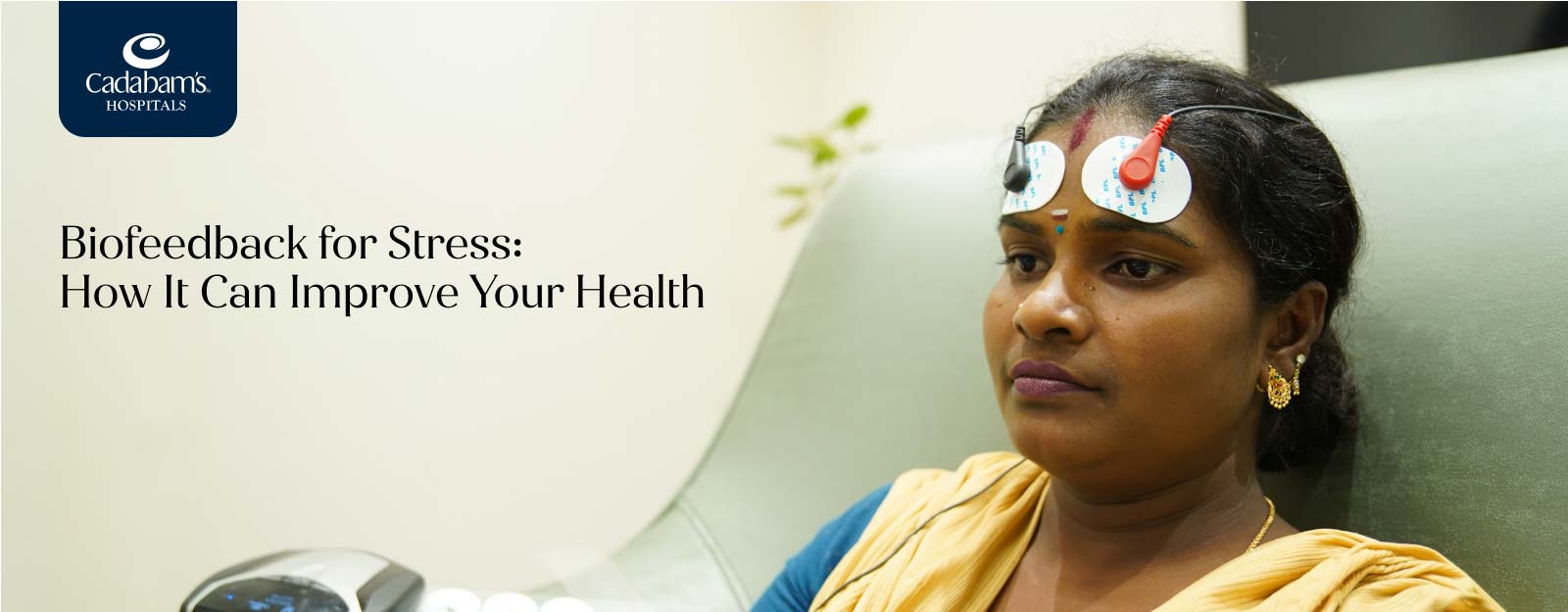Table of Content
Stress can have a paralysing effect on our body, during such times it’s essential to have some strategies for dealing with it effectively. While there are many such strategies available to manage stress, one can significantly benefit from Biofeedback Therapy. This blog will explore how with biofeedback therapy one can effectively manage stress.
What is Biofeedback Therapy?
Sometimes it’s possible to feel stressed to an extent that one cannot comfortably handle. However, through biofeedback therapy, managing stress is made possible. Biofeedback employs visual or auditory displays to give information about physiological changes during stress.
It provides them with a visual representation of their heart rate or muscle activity as they embrace a certain circumstance. By using this biofeedback, one can discover various ways of handling stress - in the physical as well as the mental aspect.
How Biofeedback Therapy Helps Reduce Stress
Biofeedback therapy for stress enables individuals to control stress and facilitate relaxation. It does this by giving feedback on other physiological processes associated with stress including pulse rate and muscle contraction. In doing so, individuals can develop an understanding of themselves and ways in which they can address these reactions appropriately
Types of Biofeedback Techniques for Stress Management
Biofeedback therapy has diverse methods that are used to address stress and other conditions. In general, a healthcare professional such as a therapist or physician recommends the type of biofeedback offered in a particular condition.
Electromyography (EMG)
The electromyography (EMG) procedure requires attaching electrodes on some skin regions commonly called muscle attachment points. These sensors measure electric activity that occurs during contraction and relaxation of muscles. By evaluating these signals, the EMG machine can determine the variation of the muscle contraction over time and how the muscles respond to stress.
Heart Rate Variability (HRV)
During heart rate variability biofeedback, therapists or physicians use sensors which are comfortably placed on the earlobe, fingertip, wrist, chest or torso. This piece of equipment shows the real time fluctuations between the beats, especially during stressful situations.
Galvanic Skin Response (GSR)
Galvanic skin response (GSR) is a type of biofeedback that tracks changes in skin conductivity resulting from sweat gland activity found mainly on the palms and fingers. These changes are in correlation with how well the skin conducts electricity, thereby showing levels of stress.
Thermal and Neurofeedback
Thermal biofeedback uses sensors to detect blood flow in the skin. Since body temperature often drops during stress, these devices can help identify early signs of distress. A low reading prompts the use of stress management techniques. Another approach, neurofeedback, utilises electroencephalography (EEG) to measure brain wave activity. Scalp sensors connected to an EEG device provide real-time feedback.
Benefits of Biofeedback Therapy for Stress Management
Biofeedback is extremely beneficial for stress management as it helps individuals learn to control physical reactions such as heart rate, muscle tension, and blood pressure during stressful situations. It promotes relaxation and emotional regulation which improves overall health and well-being.
Reducing Anxiety and Stress
With biofeedback one can be aware of their physical response to stress which can be increased heart rate, muscle tension, and rapid breathing. By learning to control these responses through relaxation techniques like deep breathing or meditation, one can effectively calm one’s nervous system and lessen feelings of anxiety and stress.
Enhancing Mental Health
Chronic stress can significantly impact one’s mental health, leading to symptoms of anxiety, depression, and difficulty focusing. Biofeedback helps create a calmer and more focused mental state which reduces stress and improves one’s ability to manage emotional responses. This can lead to improved sleep quality, increased resilience, and a more positive outlook.
Improving Physical Health
Biofeedback helps regulate physical responses like headaches, muscle tension, and digestive issues manifested by stress. One can learn to control muscle tension which can alleviate headaches with the help of biofeedback. Additionally, by reducing stress hormones like cortisol, biofeedback can contribute to a healthier overall physical state.
How to Use Biofeedback to Manage Stress?
Using biofeedback therapy for stress management is a powerful approach. This mind-body technique uses real-time feedback on the body’s physiological responses to stress. By learning to regulate these responses one can develop effective strategies to manage stress and promote relaxation.
Biofeedback Techniques at Home
While biofeedback therapy for stress is often used in a clinical setting with a therapist, there are ways to incorporate some of its principles at home to manage stress. Initially, one can focus on the body’s stress signals and then can practice deep breathing techniques and progressive muscle relaxation to address those signals. Certain phone apps and online programs offer guided meditations with biofeedback elements like breathing cues. Regularly practicing these techniques can help develop a toolbox for managing stress and promoting relaxation at home.
Professional Biofeedback Therapy for Stress
A professional biofeedback therapy for stress, the setting involves a therapist who conducts an initial consultation to assess the condition and which technique to use. Then the therapist strategically places sensors on the body to monitor physiological signals of stress, displaying the information in real time on the screen. Throughout the process, the therapist guides an individual in relaxation techniques. As one practices these techniques, the real-time feedback allows one to observe the positive changes.
Integrating Biofeedback with Other Therapies
Biofeedback, when integrated with other therapies like CBT, enhances relaxation techniques by providing visual proof of progress, motivating deeper engagement. Biofeedback strengthens mindfulness by allowing one to observe stress responses in real time, promoting earlier identification of triggers and healthier coping mechanisms. Therapists also tailor treatment plans, combining biofeedback with exposure therapy for anxiety or physical therapy for chronic pain, for a holistic approach to lasting stress management.
What can you Expect During the Treatment?
During biofeedback therapy for stress, therapists attach sensors to your skin to monitor brain waves, skin temperature, muscle tension, heart rate, and breathing. This information shows up on a screen, helping you and your therapist understand your body’s stress signals. Then the therapist guides you in relaxation techniques to manage these responses.
Biofeedback can teach you how to relax those muscles to relieve stress. sessions typically last 30-60 minutes, and the number depends on your condition and how quickly you learn. The ultimate motive of biofeedback is to teach you these techniques so that you can practice them without needing the sensors or machine at home.
Who Can Benefit from Biofeedback Therapy?
Biofeedback therapy can benefit any individual who is struggling with conditions like anxiety, chronic pain, memory loss, impaired concentration, sleep disorders, stress or headaches. It has a wide range of applications that can be used for various conditions.
Conditions Treated with Biofeedback Therapy
Biofeedback can help manage various conditions that includes:
- Anxiety
- PTSD
- Depression
- Chronic pain
- Incontinence
- Sleep disorders
- Headaches
- Attention deficit/hyperactivity disorder
To treat most of these conditions, professionals use biofeedback along with medication or other psychotherapies.
Is Biofeedback Therapy Right for You?
If you are struggling with conditions like stress, chronic pain, anxiety, or sleep issues, biofeedback therapy could be a valuable tool. Consulting a healthcare provider should be your route to biofeedback. They'll assess your situation and see if the therapy fits your needs and medical history. Talk to your doctor to see if biofeedback therapy for stress can be your path to a calmer, healthier you.
Biofeedback for Stress Management at Cadabam’s
Cadabam’s pioneering the cutting-edge technology of biofeedback in the country. With over 30 years of experience in the mental health sector, we are committed to delivering the best possible treatment for stress management. Cadabam's Neuromodulatory Services (CNS) are personalised based on your specific requirement. Biofeedback is a part of our CNS services which can help you manage stress effectively. Our team of experts are well-trained to manage stress with CNS and help you live a healthy life. Get in touch with us. You can call us at +919741476476 or email us at info@cadabamshospitals.com
FAQ
What are biofeedback techniques for stress reduction?
Biofeedback uses sensors to monitor your body’s stress signals like heart rate, muscle tension, etc. providing real-time feedback. This helps you learn to control those responses and relax by focusing on techniques like deep breathing or muscle relaxation.
How do you release stress from the body?
Incorporate techniques like meditation, deep breathing exercises, and progressive muscle relaxation into daily life to relieve stress. You can practice regular physical activities, adapt healthy habits like getting enough sleep, eating a balanced diet, or limiting caffeine to manage stress better.
How Cadabam's Help you for Addiction?
- 410+ Professional Consultants
- 1,00,00+ Happy Faces
- 120+ Currently Seeking Treatments









